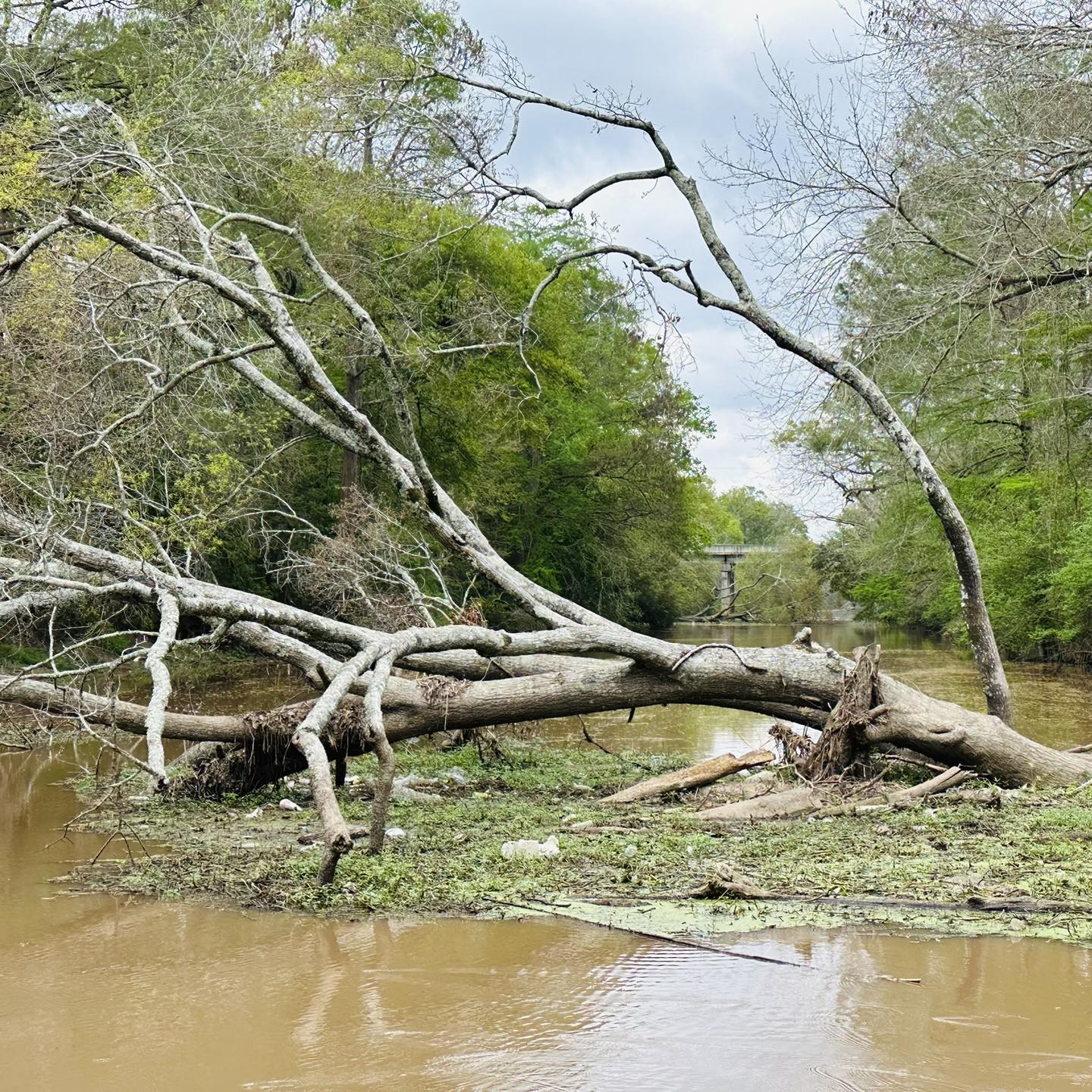These two disasters, in fact, had a lot in common.
This article will explore those similarities.
1.The reasons given by the authorities for these two disasters were very similar:
The Blame Game
- It was due to climate change.
- We didn’t have adequate funding to manage our infrastructure.
- We didn’t have adequate manpower to address the required maintenance work.
The Resulting Political Fallout
All of the affected communities have, or will have, some serious political fallout related to the disasters. While the political fallout from the California wildfires has yet to be realized certainly the Mayor of Los Angeles and the Governor of California have received very negative press and experienced extremely angry citizens. The city of Central, LA and Livingston Parish, both near Baton Rouge, experienced the most severe flooding during the 2016 event in the state. Communities in the Teche Vermilion watershed, including Lafayette, were also one of the most impacted regions in Louisiana.
As a result in Central all of the city government, Mayor and Council, were changed in the next few years after 2016 event. In Livingston Parish the Parish sued the Louisiana Department of Transportation regarding the design of the I12 roadway claiming the concrete road divider contributed to their flooding. In Lafayette Parish there has been two single term Mayor-Presidents, and the current Mayor President is in her first term. Additionally, the Parish is on its third Public Works Director since 2016.
2. Lack of authorities to recognize increasing risk to their communities.
The authorities in California did not recognize, or ignored, a lack of forest management and clearing brush increased the risk of wildfires. In the case of the Louisiana flood, authorities did not recognize the increasing risk associated with more frequent high-water events in our tributaries (the Vermilion and Amite rivers and the Bayou Teche) that allow flood waters to flow out of the watershed and ultimately into the Gulf of Mexico. Ironically, in this case, the risk was increased was also due to the lack of clearing brush, trees, and other debris as well as siltation in these tributaries and other drainage streams and ditches.


Trees and Debris Removed from the Vermilion River and Bayou Teche
So, the lack of managing vegetation, including brush and trees, contributed as a major root cause of both disasters.
In both cases there were warnings:
In California there have been a number of tragic fires in the last few decades causing major damage and loss of life. An analysis of the root causes of these fires pointed to a lack of forest management as well a lack of management of utility power lines.
In Louisiana during years leading up to the 2016 flood there were 2 other flooding disasters. A 1983 major flood on the Amite river led to over 5300 homes flooded. In 1993 a near major flood on the Vermilion River led to over 500 homes flooded. Studies completed after both of these floods made recommendations for flood mitigation projects that still have not been executed. A number of the project recommendations have led to a few active projects for both rivers. However, these projects have not yet been completed.
As a point of comparison for 2016 over 80,000 homes in the Baton Rouge area and over 10,000 in the Teche Vermilion Watershed experienced flooding.
In the case of the Vermillion River, the last major clearing, snagging, and dredging project happened over 65 years before the major flood of 2016. Clearing and snagging was last done on the Bayou Teche over 50 years prior to the 2016 flood. A newspaper article reported that the Amite River also had not been cleared and snagged in over 50 years.
An examination of the historical US Geological Survey (USGS) and US Army Corps of Engineers (USACE) gauge data for these streams illustrated increasing frequencies of high-water events as well as reduced efficiencies of certain major drainage channels to convey flood flows. An example for the Vermilion River is below.

Trend of USGS Gauge Surrey Street on the Vermilion River in Lafayette illustrating increasing frequency of 12ft Flood Events
In other words, the authorities were obviously not monitoring these trends, or if they were, failed to take action to reduce the risk.
3. Lack of coordination between authorities that manage flood waters in the watershed.
Another parallel to the California fires and flooding in Louisiana was the lack of coordination between authorities.
In California there was obvious lack of coordination between the water management authorities and the fire departments leading to certain reservoirs being empty when the fires started.
In the case of Livingston Parish lack of project coordination of gravity drainage districts due to funding resulted in back water flooding as the parish’s drainage to Lake Maurepas was not maintained sufficiently due to lack of funds. As the Morning Advocate reported in 2017 “Livingston Parish is split into five drainage districts, but only three are funded.”
During the 2016 flood there was no official action plan coordinating different entities that operate pumping systems, gates , etc. for the Teche Vermilion Watershed. As a result, in St Martin Parish, the lower Henderson Lake drainage gate remained closed which caused higher levels in all upstream tributaries that drain into Bayou Courtableau. Located in St. Landry Parish, Bayou Courtableau receives most of the water from the northern and central part of the watershed. Obstructions in the drainage outfall of Courtableau as well as the closure of the Henderson Lake drainage gate also caused higher levels downstream of Courtableau on the land side (the protected side outside of the levees) of the West Atchafalaya Floodway added to the flooding experienced in the watershed.
There are 4 distinct governmental organizations that manage floodwaters in the Teche-Vermilion watershed. Sad to say over 8 years have passed and still no official plan of action exists.
4. Failing to recognize unintended consequences
Like the unintended consequence of California sending water to the ocean to protect a certain fish resulting in a shortage of water to fight fires, we failed the recognize the unattended consequence of some projects that were performed in the Teche Vermilion watershed.
These projects included improving Coulee Ill des Cannes resulting in the formation of a waterdam at the confluence of the coulee and the river during flooding conditions.
Lafayette Parish concrete lined certain coolies, resulting in shoals and waterdams forming in the river at the intersection of the coulee Mine and the river. This is due to the water flow velocity of the concrete lined coulees carrying all siltation to the river which created the shoals.
Summary
Louisiana is at risk of another major flood due to:
- The lack of completed flood mitigation projects. While many projects have been identified and some have been started few are completed and are in service. For example, for Louisiana Watershed Initiative (LWI) a federal $1.2B program, only 2 of 27 projects identified in Region 5(Teche Vermilion and Mermantau Watersheds) and 0 of 21 in Region 9 (Amite Watershed near Baton Rouge) have been completed. While several other non-LWI projects have been either identified or started, only a few are complete.
- The lack of formal action plans that coordinate activity of the various governmental organizations when a flood threat appears.
- Rainfall patterns returned to normal in early 2024.The state experienced a 2-year drought in 2022 and 2023. Before the drought the frequency of high-water events between 2016 and 2022 had continued to increase.
Recommended Action Plan
- Contact your local and state and federal officials. Ask for a status report on what has been done to mitigate the risk of another major flood. If you are aware of drainage projects near you ask your officials what the status is and if not service, when do they expect to have the project completed.
- Report any drainage issues to the proper authorities. If you observe debris plugging ditches, coulees, or bayous, trees that have fallen into our major tributaries or caught up in bridges that cross these waterways, report it.
- If you have debris that can end up in a drain please dispose of it accordingly.
- Share this article with friends and neighbors. Remember Hurricane Season starts June 1st!
𝐀𝐛𝐨𝐮𝐭 𝐃𝐫𝐞𝐝𝐠𝐞 𝐭𝐡𝐞 𝐕𝐞𝐫𝐦𝐢𝐥𝐢𝐨𝐧
Dredge the Vermilion (DTV) is a non-profit setup to inform the public about the need to identify and to perform regional drainage projects in the Teche-Vermilion watershed.
The board of DTV are all citizen volunteers with varying backgrounds from engineering, business owners, business management, medical, and legal.
If you wish to help with our efforts please like and share our posts on Facebook(search “Dredge the Vermilion”) and please see our website at www.dredgethevermilion.org if you would like to make a donation. All donations help fund our website, Facebook, and other marketing efforts, public outreach, and research.

